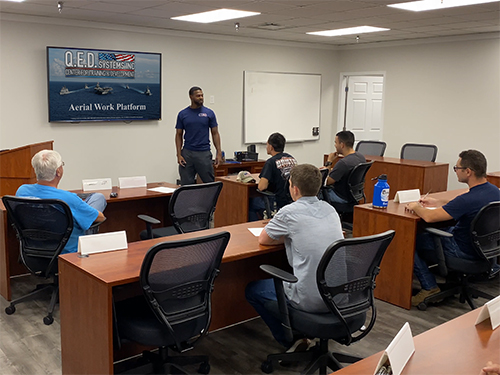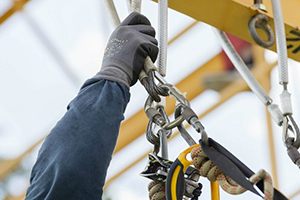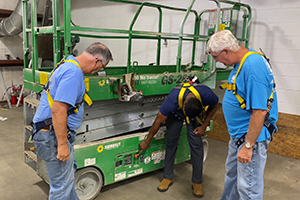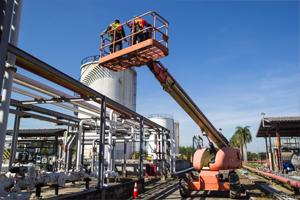Aerial Work Platform

COURSE LENGTH: 2 DAYS (16 HOURS)
COURSE LOCATIONS: Norfolk, VA
Aerial Work Platform (AWP) training provides the knowledge to safely operate different vehicles. The student will learn the control functions, limitations, and purpose of each.
All current information about each vehicle will be discussed: OSHA, personal protective equipment, pre-operational, aerial platform Inspection, gauges, and controls.
COURSE OBJECTIVES
References:
29 Code of Federal Regulation 1926 Subpart L (Scaffolds)
29 CFR 1910.67, 29 CFR 1910.269(p), 29 CFR 1926.21, 29 CFR 1926.453, 29 CFR 1926.502.
Functions
Hands on training, Site Inspections, Personal Protective Equipment, Aerial Platform/Scissor Lift Inspection, Operate Aerial Platform/Scissor Lift and Pre-use inspections are covered completely to ensure that each piece of equipment is safe for use prior to operation. Additionally, safety in the workplace, site-specific inspections are covered to ensure safe driving conditions and safety of personnel in the vicinity.
Pre-Use Inspection – Introduces the pre-use inspection. Explains the checklist that will be filled out daily before operating Aerial Work Platform.
Starting – Explain the pre-checks prior to starting an Aerial Work Platform.
Operating – Explain the importance of operating Aerial Work Platform carefully and being aware of surroundings.
Hazards – Describe the hazards that can cause accidents or injury: on the job-site, surrounding area, workers in the area.
Tip-Over – Introduce the stability zones of Aerial Work Platform. Explain the importance of keeping the Aerial Work Platform within the zone.
Fall Hazards – Explain why fall protection is a necessity when operating Aerial Work Platform.
Collision Hazards – Introduce how to inspect the job-site for potential collisions.
Safe Shutdown – Demonstrate how a safe shutdown will be effective.
Maintenance – Explain the importance of maintenance.
Fueling – Clarify how to add fuel to the Aerial Work Platform. Introduce the different types of AWP that take different fuel.
Electrocution Hazards – Present the hazards that can cause electrocution.
Performance Review Evaluate for Remediation – Ensure trainee grasp the information presented through PowerPoints. Assess trainee ability to perform what was learned.

INTRODUCTION
Students will learn the operators responsibility, general information decals and symbols.

Pre-Operational Checks
Covers personal protective equipment and inspection prior to starting.

Scissor Lift
Covers prior to start, operating, hazards and shutdown.

Boom Lift
Covers prior to start, operating, arrows, hazards and shutdown.
Instructor Responsibilities – This position has no supervisory responsibilities
Reporting Relationship – Will report to assigned supervisor
Qualifications – None
Working Conditions
This position is considered SHOP/OUTDOORS which is characterized as follows.
- Primarily outdoors during the day
- Frequently working on or near moving equipment and vibrating equipment
- Humidity is frequently above 90%
- Noise is over 85 decibels
- Light is intense/glare
- Occasional exposure to open fire/flames/sparks
- Frequent exposure to airborne dust, fumes, and gases
- Work surface is stable
- Requires working in very hot (above 90 F degrees) or very cold (below 32 F degrees) temperatures
